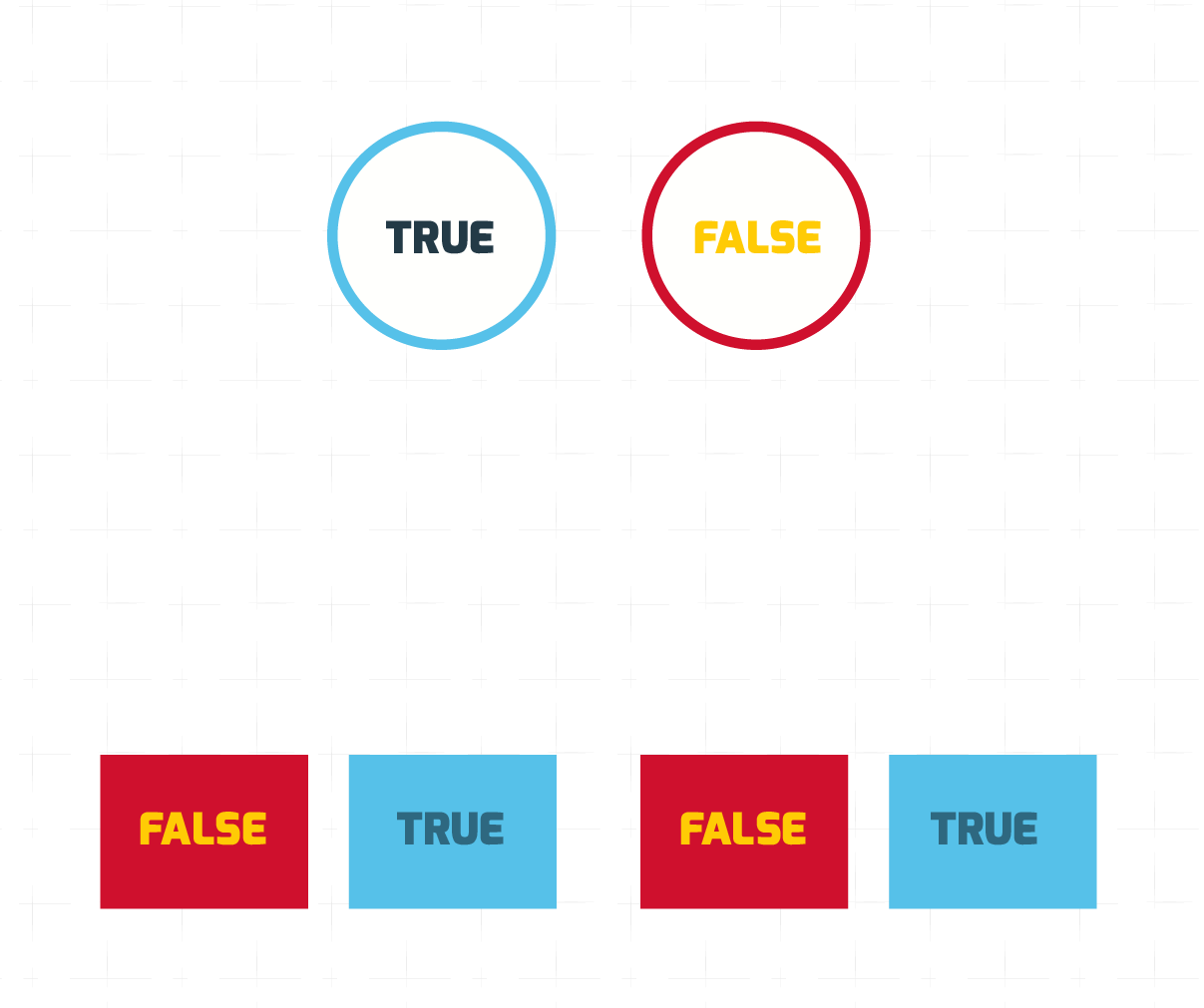Leader Guide
True and False Game
- True and False Signs Pattern
- True and False Question and Answer List
- Cardstock
- Two identical containers: pots, boxes, buckets, small trash cans, etc.
- Two different color socks; or, use two different colored soft foam balls
- Whiteboard and marker, or chalkboard and chalk to keep score
- Painters tape or masking tape
Make three copies each of the True and False Signs Pattern on cardstock.
Make a copy of the True/False Question/Answer List.
Tape a True Sign to one container and a False Sign to the other container.
Roll each sock into a ball.
Place the containers on the floor. Leave some space between them. Place against a wall for bank shots if desired.
Several feet from the containers, tape a True and False sign set on the floor for Team 1 and another set for Team 2; see illustration.

For larger classes, create more teams and add signs, containers and socks.
Divide the children into two teams. If they are unequal, a player may take two turns.
Step back and forth on the floor signs and then toss a sock ball as you describe the game.
This is a True and False question game where you will have not one, but two chances to score points for your team! You can score a point by answering the question correctly and by tossing your sock into the correct container.
I will ask the same question to a player for each team. You will answer by standing on either the True or the False Sign. That’s right; you don’t even have to speak! After both players are standing on their sign choice, I will reveal the answer. Players score one point for standing on the correct answer. Then, players try to toss their sock into the container with the correct answer. So, if the correct answer is true, you score a point by tossing your sock into the container with the True Sign. So, even if you didn’t stand on the correct sign, you still have a chance to score a point! Let’s play!
Read the questions from the list. The team with the most points after all the children have taken a turn wins.
Conclusion: Did you like having two chances to score points?
Saul and David were going in two different directions, weren’t they! Saul fell out of favor with God because of his disobedience, jealousy, and uncontrolled anger. David increased in favor with God and people as he obeyed God under the anointing of the Holy Spirit.
True/False Question/Answer List
- Samuel told Saul that he had disobeyed God’s command and God rejected him as king. (True—1 Samuel 15:26.)
- Saul tore the hem of Samuel’s robe. (True—1 Samuel 15:27.)
- Samuel was sent by God to anoint Moses as king of Israel in Saul’s place. (False—Samuel anointed David, 1 Samuel 16:1.)
- The Spirit of God came powerfully upon David when he was anointed king. (True—1 Samuel 16:13.)
- God’s Spirit left Saul. A tormenting spirit filled him with depression and fear. (True—1 Samuel 16:14.)
- When Saul was depressed, David played a tambourine and Saul felt better. (False—David played a harp, 1 Samuel 16:23.)
- A kinnor is another name for the harp that David played. (True.)
- Whatever Saul asked David to do, David did it successfully. (True—1 Samuel 18:5.)
- Saul was happy for David when the women sang about David’s battle victory. (False—he was jealous, 1 Samuel 18:7–9.)
- One day when David was playing the harp, Saul shot an arrow at him. (False—he threw a spear, 1 Samuel 18:10–11.)
- At times, David hid in caves to avoid Samuel. (False—to avoid Saul, 1 Samuel 22:1; 1 Samuel 24:1–3.)
- David’s men tried to keep David from taking revenge on Saul. (False—they encouraged him to take revenge,1 Samuel 24:7,10.)
- David would not hurt Saul because he was God’s anointed one. (True—1 Samuel 24:5–6.)
- David cut off part of Saul’s sandal in the cave instead of hurting him. (False—he cut part of his robe, 1 Samuel 24:4.)
- David told Saul that he would never hurt him. (True—1 Samuel 24:12.)